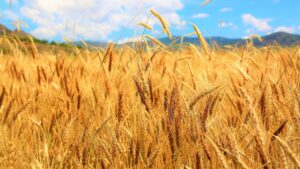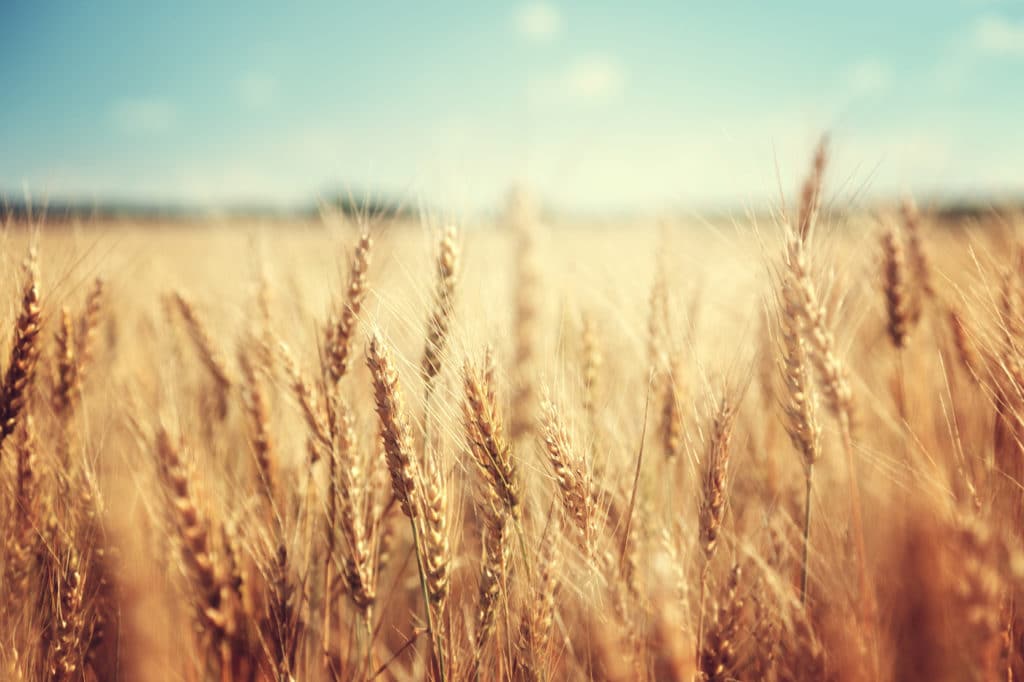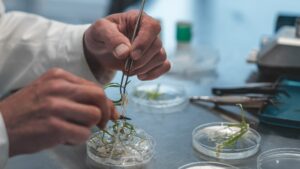Although hybrid wheat has found a market in Europe, it’s falling behind in the U.S.
In the 1970s, there were some very active, commercial programs in the United States working to develop hybrid wheat. At that time, there was only one committed U.S. public program. It was located at North Dakota State University. They were doing all kinds of work, but it was tedious hard work. Eventually, a commercial company running perhaps five project programs would come up with a good hybrid. Then a public program would catch up with another hybrid. It would not be long before another commercial hybrid would be announced, and then the public programs would catch it.
No one could ever get far enough ahead to change the market. Eventually, the private sector programs, which were already on thin financial ice, abandoned working on hybrid wheat. Meanwhile, China and the International Rice Research Institute (IRRI) kept their hybrid rice efforts going.
“Looking back, I think the public sector did a huge disservice to commercial companies in the seventies and eighties because we never devoted any of our resources to try to help them. I wish that the United States had kept at least one program going to learn about hybrid wheat,” says P. Stephen Baenziger, professor and Wheat Growers presidential chair, University of Nebraska. “After 30 years in the wilderness with rice, China and the Philippines now have hybrid rice. It is grown at 17 million hectares (42 million acres). I wonder where we would be with wheat if we had maintained a dedicated, sustained effort to develop hybrid wheat, the way China, a developing country, did with mixed rice.
“If you ask me why it has taken us so long, I say it is because we have lacked a long-term commitment to developing hybrid wheat. A program focused on hybrid wheat would run until the principal investigator left or retired. Then the program would stop,” Baenziger says. “We were asking the private sector to make long-term investments against very well-funded public programs. To the best of my knowledge, no hybrid wheat is being sold in the United States.”
Baenziger’s program continues to work on developing hybrid wheat with support from the USDA competitive grants program.
“This is probably the highest risk research I have ever done. It is not something I’m going to go to ask my growers to spend their checkoff dollars. The USDA is investing in something which, if we are successful, will be a home run. The world will need more wheat for food.”
Increasing wheat consumption is one-third due to increases in prosperity and two thirds due to increases in population. Wheat provides roughly 20% of the calories in the world and 20% of the protein in the world. If we expect population growth to continue to increase as we think it will. And if global prosperity is going to increase as we expect, then by 2050, the world will have 10 billion people who will be eating like 12 billion. Increasing prosperity increases per capita food consumption.
“We deem that we’re going to have to raise our genetic gain by roughly, depending on where you are in the world, from zero to roughly 1.4 to 1.7. The only way I could see doing that is with hybrids including hybrid wheat,” he concludes.
Syngenta’s Developments
Globally, hybrid wheat has been in development for about 30 years. For various reasons, it never could get to market. Paul Morano, head of North American cereals for Syngenta, has spent the last ten years working with breeders to bring hybrid wheat to market. He says Syngenta’s AgroPro brand wheat breeders have a renewed focused on developing and delivering hybrid wheat. Syngenta had been working to develop hybrid wheat before pausing to evaluate progress.
“We’ve had to readjust a couple of times to evaluate where we are and recalculate the numbers as you do whenever you’re doing something new. Our program was started in 2010. In the last 18 months, we have been extremely focused on developing hybrid wheat. We are making great headway toward a possible small release of hybrid Spring wheat in spring 2022,” Morano says. In spring 2023, he anticipates Syngenta could have larger quantities available for seed growers in the Northern Plains spring wheat region. Winter wheat will follow in 2024 or 25.
According to Morano, Syngenta’s concentration is now on the production of hybrid wheat seed, which has always been the Achilles heel of hybrid wheat. In recent years, Syngenta has made good progress on lowering the cost of production, making it feasible for farmers to realize a good ROI on the premium cost of hybrid seed
Breeding Breakthroughs
There have been two important breakthroughs that have enabled Syngenta’s hybrid wheat program to move forward. One is technology; the second is hybridization methods.
“We hear a lot about technology in agriculture, but the answer to developing hybrid wheat is truly technology,” Morano says. “We can identify DNA for our wheat brands. We have marker laboratories that can do quick DNA and genomic samples. And we’ve identified what progress we were making year after year in the field year after year with the genomics of specific varieties. Now we can develop a new variety with the attributes that we want. We’re able to identify those through markers. That allows us to start out with that product as opposed to relying on a process of elimination. That has been very helpful.
“As we select for proper females and males to make a new hybrid, we know that there are specific attributes that a female needs to have, as well as what the male needs for the right pollination to take place. Arranging for pollination in corn is only somewhere similar to wheat. We have to have the right male and female to have both good productivity and producibility. We now have the technology to enable us to identify the desired attributes within a vast gene pool. We also have marker labels for a massive number of potential parent lines that give us the ability to determine that this parent and that parent will probably make a good hybrid. With that, we are able to start with something that we didn’t have to spend years developing. We didn’t hat that resource just a few years ago. Having that capability is making a huge difference.”
The second breakthrough involves hybridization methods. Since wheat is a self-pollinating crop, breeders need a sterilization process for the females. Then they have to be able to bring those females back into a non-sterile state to get them to produce seed for the farmer. There are different hybridization methods used to sterilize and restore the female parent.
“Chemical hybridization (CH) is a method that has been used for more than 30 years when most groups were using it,” Morano explains. “We were using it 10 years ago as a starting point, but now we have gone to cytoplasmic male sterility (CMS), a non-destructive non-chemical method. With CMS we can sterilize the female and then use restorer genes to bring that female back around when it’s time for seed production. The hybridization processes and the technologies that we have today have really made a big difference. With that being said, we do not ever discount the learnings gained from the old days of hybrid wheat development. You always learn from those things.”
Male Restorers and Seed Production
Using male restorers in corn is much simpler than in wheat. The difference is wheat’s genome is much larger and more complex, which has made getting the male restorers for wheat an issue.
“We have identified certain restored genes, and we’ve been able to figure out how to stack those genes on top of one another. We are using a multiple-gene system when we look at restoring and have done a lot of work with that. Getting the male restorer has been a significant breakthrough from our side. That has helped us when we have identified the genes that we know we need to get into those males and get them restored. So yes, it is a huge, huge thing. And once again, it was just one of those things that have never been identified. Our restoring side has come a long way.” The first time you do something new, it just takes longer, even in plant breeding.
The third major issue with the commercialization of hybrid wheat is production. Wheat does not reproduce from itself. A seed producer has to basically start every new cycle with a sterile female which is then crossed onto a male that restores it. That process has to happen every year. With between 45 and 50 million acres of wheat in the United States planted at a relatively high seeding rate of perhaps there is the potential for an enormous amount of seed.
Hybrid seed production is a laborious and high-cost process. A majority of Syngenta’s R&D time is now being spent perfecting hybrid seed production. It is essential to keep production costs where it is feasible for a farmer to pay a premium price for a bag of hybrid seed and yet get a strong return on his dollar. Syngenta is 75-80% of the way there. They have identified some processes that are helping. Syngenta has four large hybrid wheat seed production fields to be harvested in 2021. “We are learning every year and getting better, but we still have a way to go,” states Morano. “If the markets would add a few dollars to the price of wheat, that would suddenly look much better.”
When Syngenta was doing modeling a decade ago, wheat prices were higher. Commodity prices are weaker, which has affected the competitiveness of hybrid wheat. At four-dollar per bushel, hybrid wheat is not as attractive as it is at $7. Yet, farmers have to live with $4 wheat at times. Syngenta is working to make sure it’s a viable product at four dollars
“Wheat, at times, is planted on marginal ground. Consistency in a wheat field can be very variable. Hybrid wheat likes stress; it has a competitive advantage compared to varietal wheat under stress. We have been very pleasantly surprised with the improved consistency of hybrid wheat. We need to have a consistent 10 to 12% yield advantage, but we are striving for a 15% advantage over anything else on the market. We also need consistency with the quality traits. We are finding very positive results when you use a male and a female that have good attributes agronomically or good attributes for quality, we seem to hold or even improve those attributes. That is another positive. So yes, there are many positives that hybrid wheat will bring to wheat producers. After 30 years of research, we are on the verge of becoming an overnight success.”













